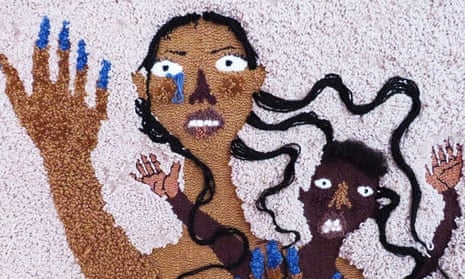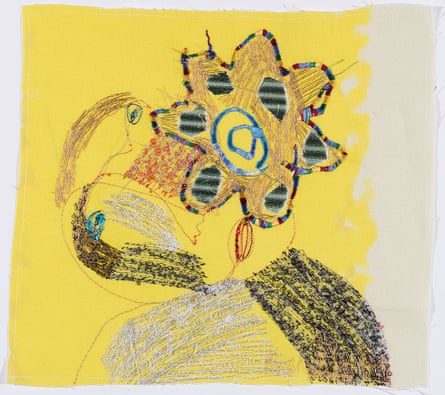In a revolutionary shift, the traditional realms of embroidery, weaving, and fabric decoration are emerging as potent vehicles for political expression, as a series of captivating exhibitions this summer and autumn spotlight the protest intricately woven into stitchwork. Departing from their historical classification as mere crafts, these exhibitions are propelling textiles into the realm of high art, exposing their compelling narrative of political power and societal significance.
Redefining Textiles: From “Crafts” to Political Statements
For far too long, embroidery and weaving have been marginalised as “women’s work” or relegated to the realm of crafts, overshadowed by the more exalted domains of painting and sculpture. However, this summer’s thought-provoking exhibitions are dismantling such narrow perceptions and revealing the formidable political force embedded within textiles. These showcases are breathing new life into threads, yarns, and fabrics, elevating them to a medium of poignant protest and creative commentary.

Material Power: Palestinian Embroidery as Political Expression
At the renowned Kettle’s Yard in Cambridge, the exhibition “Material Power” turns its spotlight on Palestinian embroidery, tracing its evolution from a tradition to a mode of poignant political protest. The meticulously crafted stitches on display encapsulate a vivid narrative of resistance and resilience, challenging preconceived notions and amplifying the silenced voices of Palestinian women. Symbolism weaved into these fabrics tells a story of unity, defiance, and cultural preservation against a backdrop of adversity.

Threads of Transformation: Postcolonialism, Migration, and Gender
In the heart of Bristol’s Arnolfini, the group exhibition “Threads” unfurls a diverse aspects of postcolonialism, migration, and gender narratives through the intricate art of weaving, knitting, and stitching. Artists such as Anya Paintsil and Raisa Kabir illuminate stories that transcend borders, revealing the profound connections between craft and identity, tradition and transformation.
Fabric as Propaganda: Unraveling the Fabric of Democracy
Stepping into autumn, the Fashion and Textile Museum in London invites visitors to explore the compelling history of fabric’s role in shaping political propaganda through “The Fabric of Democracy.” Unveiling the fascinating interplay between fabric, design, and political messaging, the exhibition showcases how textiles have been harnessed as powerful tools of persuasion and commentary throughout history.
Challenging Waste Colonialism: British Textile Biennial’s Bold Statements
The upcoming British Textile Biennial held in Lancashire casts a spotlight on contemporary artists who draw inspiration from the dark legacy of “textile waste colonialism.” Victoria Udondian, Jeremy Hutchison, and Sunny Dolat are among those confronting the unsettling practice of discarding unwanted textiles in countries like Ghana and Chile, reimagining discarded fabrics as potent symbols of resilience and reclamation.
A Paradigm Shift: Textiles as Political Canvases
Fashion historian Amber Butchart, a curator of the British Textile Biennial and “The Fabric of Democracy,” challenges the traditional hierarchy of the art world. She underscores that textiles are far from mere adornments; they have long carried subversive messages and cultural narratives. Through exhibits that encompass everything from Chinese quilts laden with revolutionary symbols to contemporary tea towels bearing Brexit slogans, these showcases are rewriting the narrative of textile art, establishing it as a compelling and potent form of political commentary.
Crafting Change: Textile Art’s Transformative Potential
The convergence of art, activism, and craft is on full display through the works of textile artist Alice Kettle, who spearheads the exhibition “To Boldly Sew.” Kettle’s powerful creations resonate with a profound authenticity that surpasses other artistic mediums. The pandemic’s grip sparked a resurgence of interest in handcrafting, providing a therapeutic outlet and a fresh appreciation for the artistic potential of textiles.

A Stitch in Time: Rewriting Art’s Narrative
These exhibitions unveil a shifting cultural landscape that places textiles at the forefront of creative expression and political discourse. With a newfound appreciation for their narrative richness and potent symbolism, textiles are now taking center stage as vehicles for change, challenging the conventional boundaries of art and heralding a new era of inclusive and impactful storytelling.
Feature Image courtesy: Singulart
Forgotten Textile of Tamil Nadu: A Vanishing Craft of Karuppur Cloth

Contributor




